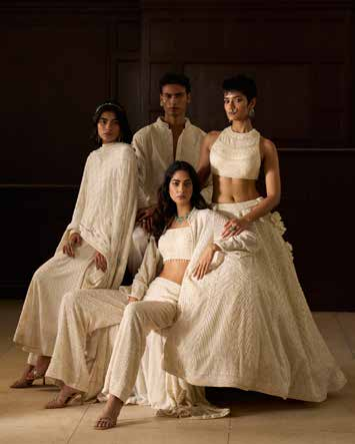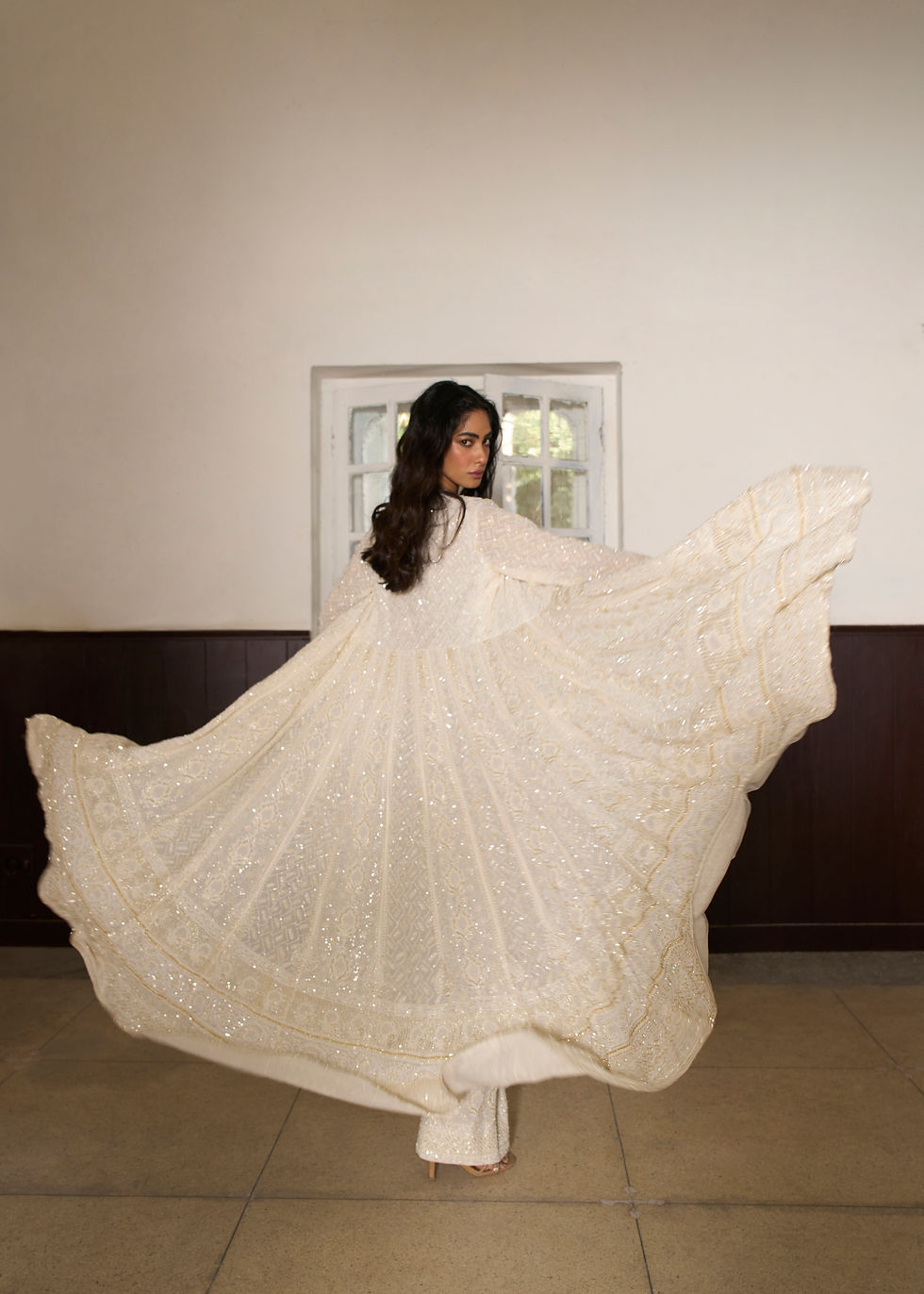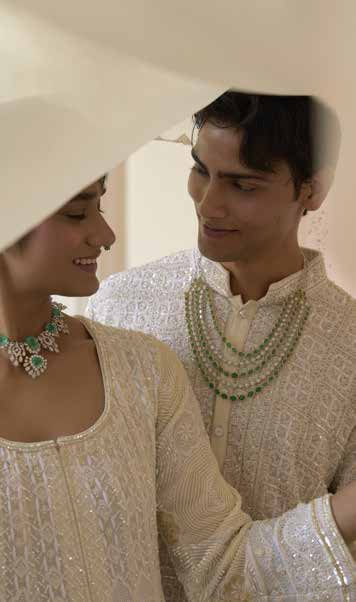A legacy in every stitch
- Editors of Luxe Code
- Oct 4
- 2 min read
Rooted in the regal craft traditions of Awadh, Anjul Bhandari’s eponymous label preserves the purity of Chikankari while empowering a new generation of master artisans.
Photo courtesy: Anjul Bhandari

For over a decade, Anjul Bhandari has carved a unique niche in the world of couture by placing one of India’s most treasured crafts—Chikankari—at the heart of her design language. A self-taught artist from Lucknow with a deep reverence for her roots, Anjul’s journey began not in fashion school, but in her own home, inspired by the legacy of her mother-in-law, a passionate social worker dedicated to uplifting rural women.
Launched in 2010, the eponymous label marries the grace of age-old Awadhi embroidery with a modern couture aesthetic, all while preserving the intricate artistry that defines true Chikankari. “My label is an endeavour to continue her legacy by marrying my love for fashion, art and Chikankari with designs that celebrate the labour of love,” shares Anjul. That labour is no understatement—some pieces take over two years to create, with the brand’s iconic Ek Taar embroidery requiring nearly 17,500 hours of painstaking work.


Photos by Anjul Bhandari
What is the origin of Chikankari, and how is it connected to the cultural history of Lucknow?
The roots of Chikankari date back to the late 18th century, when the Nawabs of Awadh relocated their court from Delhi to Lucknow and began to craft a unique cultural identity. Freed from the aesthetic codes of Delhi, the Nawabs ushered in an era of opulence, patronising poets, musicians, and artisans, including those who brought Chikankari to life. Some say the craft was born when a bored princess embroidered a cap to impress a nawab, sparking envy and inspiration among other women in court. Another tale credits a wandering saint who taught the art to Ustad Mohammad Shair Khan, a descendant of Fiaz Khan, India’s first master craftsman awardee. Whichever the story, the result is a craft deeply entwined with Lucknow’s royal and artistic heritage.
What is unique about the artisans working with Anjul’s label, and how does this reflect the craft’s heritage?
With a commitment to purity over reinvention, the label stays true to traditional Persian and Mughal motifs, refusing to dilute its essence with machine or computer embroidery. Each piece is handmade and one-of-a-kind, crafted by over 1,500 fourth-generation master artisans, many of whose families have a history of embroidery for the royal courts of Lucknow. Anjul remains the only woman entrepreneur to lead such a significant initiative in the region, ensuring that her work is not only creative but also socially transformative.

All of the label’s Chikankari comes from within the GI-registered zones of Lucknow, making quality non-negotiable. And while the techniques are old-world, the designs remain timeless—quietly luxurious, thoughtfully detailed, and unmistakably modern in their expression.

Anjul Bhandari’s collections are available at Ogaan (New Delhi), Ensemble (Mumbai), Good Earth (New Delhi, Mumbai, Hyderabad), Aashni & Co (London & online), Ave (New York), and at the brand’s private studio in Hauz Khas, New Delhi (by appointment).
.





Comments